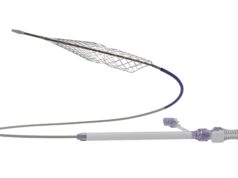
In its current form, postprocedural surveillance of arteriovenous grafts (AVGs) used to treat venous stenosis is “little more than supervised neglect”, and should be re-evaluated using the right patient cohorts and treatment strategies. That is according to a discussion on the long-term functionality of AVGs at the Charing Cross (CX) 2021 Digital Edition (19–22 April, online).
In a session on controversies surrounding the maintenance of vascular access, consultant vascular and renal transplant surgeon David Kingsmore (Queen Elizabeth University Hospital, Glasgow, UK) stated that optimal surveillance of these grafts is “critical” to ensuring their long-term function. Kingsmore also said, however, that he “absolutely agreed” with CX Executive Board member and one of the programme’s moderators Nicholas Inston (Queen Elizabeth Hospital Birmingham, Birmingham, UK) following his assertion that “surveillance is little more than supervised neglect”, adding: “We absolutely, fundamentally need to reconsider what surveillance is—it is not about imaging, it is about surveillance programmes”.
Kicking off his presentation on this subject, Kingsmore claimed that, while five of the six existing randomised controlled trials of AVG surveillance have found “no significant survival benefit”, he believes this is “very likely” to reflect the mixed populations, pathologies, and treatment options involved in these trials—also asserting that better venous stenosis treatments may make a difference on this front.
On the subject of optimising venous stenosis treatments, Kingsmore presented a brief analysis involving a cohort of 305 patients with an AVG. In this cohort, 153 experienced venous stenosis, with 95 of these being detected electively via surveillance and 53 being detected following presentation with thrombosis. Regarding subsequent treatments, he stated that the number of thrombectomies carried out in the following year was more than three times higher in the thrombosis group compared to the elective group, while the rate of angioplasties was broadly the same between the two, and stent graft procedures were slightly more than 60% higher in the thrombosis group. Kingsmore added that the risk of graft loss observed here was “significantly higher” in those who presented with thrombosis as well.
“What we can say, therefore, is that—in treating venous stenosis—waiting until a thrombosis occurs and then treating it is a bad approach,” said Kingsmore. “Reactive maintenance is good for car headlights, but bad for AVGs, and that leads us to our next question: At elective detection of venous stenosis, what should our treatment method be?”
Digging down into the elective group, Kingsmore stated that rates of follow-up angioplasties were similar, regardless of whether patients received an angioplasty or a stent graft first, as was the total number of stent grafts seen in both of these subgroups. However, the time to re-intervention was more than halved in patients who received an angioplasty (76 vs. 198 days), and the rate of follow-up thrombectomies was four times higher if an angioplasty was performed first rather than a stent graft.
“Essentially, what is happening is that, if you perform an angioplasty first, you will perform a stent graft when the patient presents with thrombosis,” Kingsmore said, also demonstrating a “huge difference” in rates of AVG loss after one year between the two groups (15% in the angioplasty-first group vs. 3% in the stent graft-first group). He concluded his talk by claiming that a re-evaluation of surveillance based on the right cohort, and involving the superior treatment option of AV stent grafts, is required due to the fact both presentation (elective vs. thrombosis) and intervention (angiography vs. stent graft) are “independently and highly significant”. Kingsmore added that surveillance followed by angioplasty actually displayed the same survival outcomes as thrombosis followed by stent graft, but that “we can be pretty certain” that the worst treatment approach is no surveillance, followed by an angioplasty.
When quizzed by Inston in the discussion proceeding his presentation, who raised the issue of the “untoward consequence” of treating asymptomatic venous stenosis patients who may not have gone on to develop further problems, Kingsmore stated: “In the trials looking at venous stenosis, these patients almost routinely will progress and, over a period of time, they will become symptomatic. The only times you will not get a progression or presentation is if you get a transplant, or die—so, I accept that that is a potential risk but, in our follow-up, people who have not had an intervention done all presented.”
CX Executive Board member, and the session’s other moderator, Domenico Valenti (King’s College London, London, UK) followed this by suggesting “perhaps we should learn a lesson from vascular and peripheral surgery on this, where you usually survey the distal bypass for a year or several months”—a notion with which Kingsmore agreed, also asserting that “you have to look not only at when you should intervene, but what the costs will be if you do not intervene, because thrombosis and long-term graft loss are associated with very high costs, and I think there is a lower risk to intervening sooner compared to deferring treatment”. This statement, which drew nodded approval from both Valenti and Inston, as well as another of the session’s speakers, consultant nephrologist Chieh Suai Tan (Singapore General Hospital, Singapore), brought the discussion on optimising AVG surveillance to a close.
The full presentation and subsequent discussion at CX 2021 can be viewed here by registrants.











